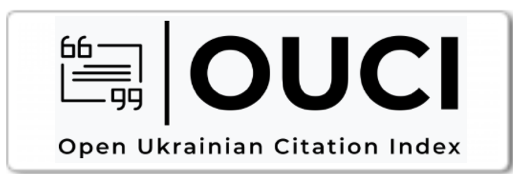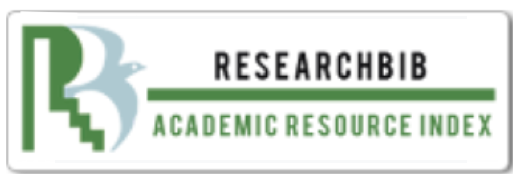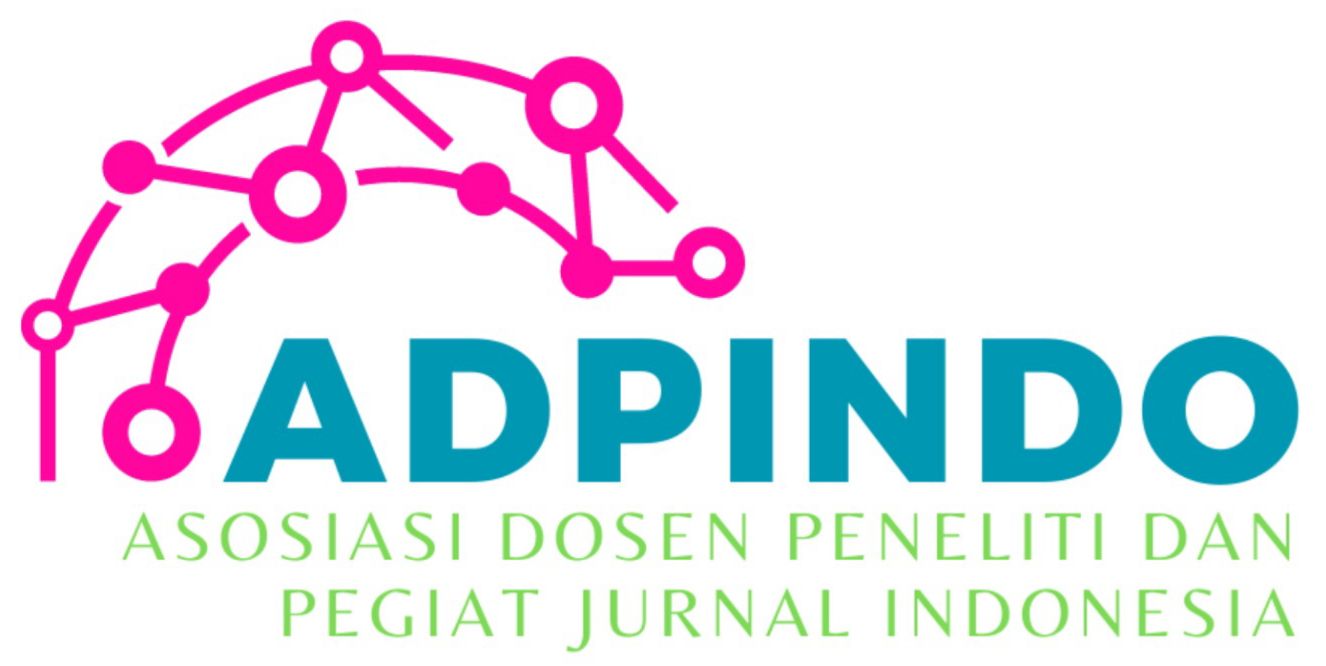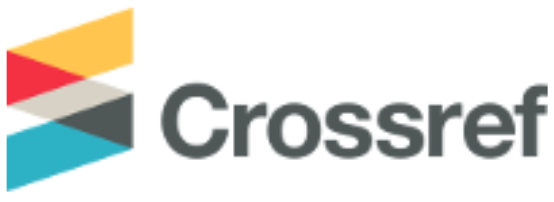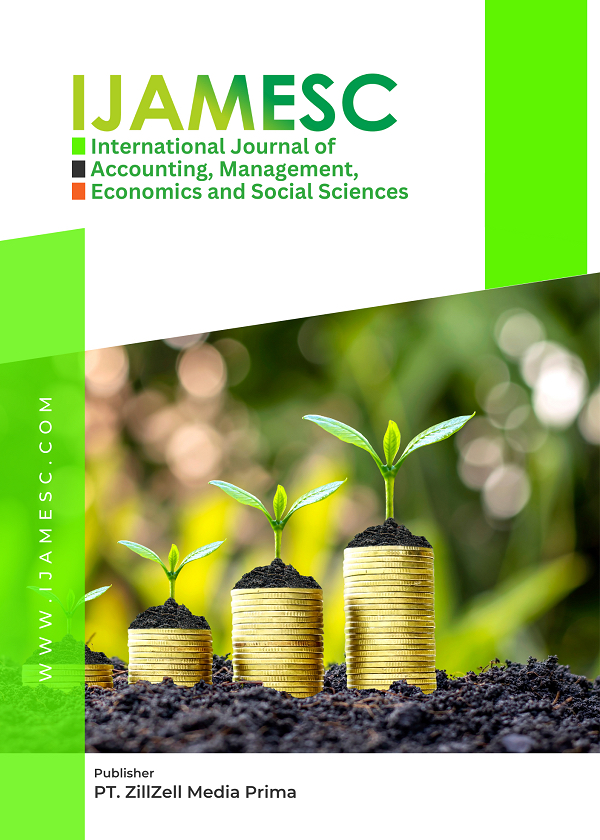SHADOWY USER BEHAVIOR IN DIGITAL MARKETING: A MANAGEMENT-ORIENTED VIEW ON CYBER POLICY, CULTURAL INFLUENCE, AND ONLINE INTERACTION
Main Article Content
Arifah Rachmawati
Meiliyah Ariani
Online digital systems are driving the growth of economies, but they have also given rise to problematic online user behavior. Online shady practices are a threat to social cohesion, yet they persist and evade legal detection. To promote a healthy and inclusive digital environment, there is a need for further research to understand the interplay between culture, legislation, and online user behavior. This study aims to examine the interrelations between socio-cultural settings, cyber policies, and online user behavior. It explores the effectiveness of current policy measures and posits possible ways for promoting a healthy and inclusive digital environment. The study employs a narrative review of literature to understand the interplay between culture, legislation, and online user behavior. The findings highlight the influence of cultural settings on online user behavior and the interconnectedness of legislation, culture, and online interactions. The emphasis on the need for context-specific approaches and inclusive policymaking methodologies to foster a healthy and inclusive digital environment were the knowledge gaps identified that warrant further research. Understanding the interplay between cultural settings, legislation, and online user behavior provides valuable insights for practitioners and researchers to look more into a culturally sensitive safe digital space.
Akgül, M., & Kırlıdoğ, M. (2015). Internet censorship in Turkey. Internet Policy Review, 4(2), 1-22.
Anderson, A., Huttenlocher, D., Kleinberg, J., & Leskovec, J. (2013, May). Steering user behavior with badges. In Proceedings of the 22nd international conference on World Wide Web (pp. 95-106).
Barrett, G. (2015). Deconstructing community. Sociologia Ruralis, 55(2), 182-204.
Barth, S., & De Jong, M. D. (2017). The privacy paradox–Investigating discrepancies between expressed privacy concerns and actual online behavior–A systematic literature review. Telematics and informatics, 34(7), 1038-1058.
Bertot, J. C., Jaeger, P. T., & Hansen, D. (2012). The impact of polices on government social media usage: Issues, challenges, and recommendations. Government information quarterly, 29(1), 30-40.
Bohanon, A. L. (2016). Tweeting the Police: Balancing Free Speech and Decency on Government-Sponsored Media Pages. Minn. L. Rev., 101, 341.
Braman, S. (2013). The geopolitical vs. the network political: Internet designers and governance. International Journal of Media & Cultural Politics, 9(3), 277-296.
Broadhurst, R., & Chang, L. Y. (2013). Cybercrime in Asia: trends and challenges. Handbook of Asian criminology, 49-63.
Brodie, R. J., Ilic, A., Juric, B., & Hollebeek, L. (2013). Consumer engagement in a virtual brand community: An exploratory analysis. Journal of business research, 66(1), 105-114.
Brown, G., & Poellet, K. (2012). The customary international law of cyberspace. Strategic Studies Quarterly, 6(3), 126-145.
Centivany, A. (2016). Values, ethics and participatory policymaking in online communities. Proceedings of the Association for Information Science and Technology, 53(1), 1-10.
Chen, J., & Shen, X. L. (2015). Consumers' decisions in social commerce context: An empirical investigation. Decision Support Systems, 79, 55-64.
Corbett, S., & Walker, A. (2013). The big society: Rediscovery of ‘the social’or rhetorical fig-leaf for neo-liberalism?. Critical Social Policy, 33(3), 451-472.
Danescu-Niculescu-Mizil, C., West, R., Jurafsky, D., Leskovec, J., & Potts, C. (2013, May). No country for old members: User lifecycle and linguistic change in online communities. In Proceedings of the 22nd international conference on World Wide Web (pp. 307-318).
Edwards, A., Housley, W., Williams, M., Sloan, L., & Williams, M. (2013). Digital social research, social media and the sociological imagination: Surrogacy, augmentation and re-orientation. International journal of social research methodology, 16(3), 245-260.
Flew, T., Martin, F., & Suzor, N. (2019). Internet regulation as media policy: Rethinking the question of digital communication platform governance. Journal of Digital Media & Policy, 10(1), 33-50.
Foster, D. (2013). Community and identity in the electronic village. In Internet culture (pp. 23-37). Routledge.
Gallagher, S. E., & Savage, T. (2013). Cross-cultural analysis in online community research: A literature review. Computers in Human Behavior, 29(3), 1028-1038.
Gillespie, T. (2018). Regulation of and by platforms. The SAGE handbook of social media, 254-278.
Grabner-Kräuter, S., & Bitter, S. (2015, January). Trust in online social networks: A multifaceted perspective. In Forum for social economics (Vol. 44, No. 1, pp. 48-68). Routledge.
Green, R. T., & White, P. D. (2017). Methodological considerations in cross-national consumer research. In Language in International Business (pp. 20-32). Palgrave Macmillan, Cham.
Gruzd, A., Jacobson, J., Wellman, B., & Mai, P. (2016). Understanding communities in an age of social media: the good, the bad, and the complicated. Information, Communication & Society, 19(9), 1187-1193.
Guo, C. J., Warkentin, M., Luo, X. R., Gurung, A., & Shim, J. P. (2020). An imposed etic approach with Schwartz polar dimensions to explore cross-cultural use of social network services. Information & Management, 57(8), 103261.
Hongju Koh, H. (2012). International law in cyberspace. Harvard International Law Journal, 54.
Hsiao, C. C., & Chiou, J. S. (2017). The social influence of online collaborative community: the moderating effect of achievement. Behaviour & Information Technology, 36(3), 269-280.
Iosifidis, P. (2014). Social Media, Democracy and Public Service Media. Online Journal of Communication and Media Technologies, 4, 71-88.
Ismail, N. A., & Masud, M. M. (2020). Prospects and challenges in improving e-commerce connectivity in Malaysia. E-commerce Connectivity in ASEAN. Jakarta, Indonesia: Economic Research Institute for ASEAN and East Asia, 78-98.
Johnson, S. L., Safadi, H., & Faraj, S. (2015). The emergence of online community leadership. Information Systems Research, 26(1), 165-187.
Kalia, P., Ben Dahmane Mouelhi, N., Tebessi Hachana, S., Malek, F., & Dahmen, M. (2019, February). Using social networking sites: A qualitative cross-cultural comparison. In International Conference on Emerging Technologies in Computer Engineering (pp. 269-285). Springer, Singapore.
Kim, J., & Hastak, M. (2018). Social network analysis: Characteristics of online social networks after a disaster. International journal of information management, 38(1), 86-96.
Kittichaisaree, K. (2017). Public international law of cyberspace (Vol. 32). Cham: Springer.
Klonick, K. (2017). The new governors: The people, rules, and processes governing online speech. Harv. L. Rev., 131, 1598.
Klonick, K. (2020). The Facebook Oversight Board: Creating an independent institution to adjudicate online free expression. Yale Law Journal, 129(2418).
Kozyreva, A., Lewandowsky, S., & Hertwig, R. (2020). Citizens versus the internet: Confronting digital challenges with cognitive tools. Psychological Science in the Public Interest, 21(3), 103-156.
Land, M. (2013). Toward an international law of the internet. Harv. Int'l LJ, 54, 393.
Lara-Hernandez, J. A., & Chin, J. J. Y. (2022). Sense of Community and Spatial Agency: Key Elements of Resilient Communities. In Resilient Communities and the Peccioli Charter (pp. 59-64). Springer, Cham.
Lim, M. (2017). Freedom to hate: social media, algorithmic enclaves, and the rise of tribal nationalism in Indonesia. Critical Asian Studies, 49(3), 411-427.
Lockard, J. (2013). Progressive politics, electronic individualism and the myth of virtual community. In Internet culture (pp. 219-231). Routledge.
Lubin, A., & Townley, H. (2020). The International Law of Rabble Rousing. 45 Yale Journal of International Law Online 1 (March 2020).
Mahmoudi, A., Yaakub, M. R., & Bakar, A. A. (2018). New time-based model to identify the influential users in online social networks. Data Technologies and Applications.
Malinen, S. (2015). Understanding user participation in online communities: A systematic literature review of empirical studies. Computers in human behavior, 46, 228-238.
Mansell, R. (2017). Bits of power: Struggling for control of information and communication networks. The Political Economy of Communication, 5(1).
McGinn, K. L. (2017). History, structure, and practices: San Pedro longshoremen in the face of change. In Exploring positive relationships at work (pp. 265-276). Psychology Press.
Meserve, S. A., & Pemstein, D. (2020). Terrorism and internet censorship. Journal of peace research, 57(6), 752-763.
Monteagut, L. E. (2017). Etic approach to qualitative research. The International Encyclopedia of Communication Research Methods, 1-2.
Norris, P. (2023). Cancel culture: Myth or reality?. Political studies, 71(1), 145-174.
Nugraha, L.K. &. Putri, D.A. (2016). “Mapping the Cyber Policy Landscape: Indonesia.”
Global Partners Digital, (November): 1–28.
Park, J. H., Gu, B., Leung, A. C. M., & Konana, P. (2014). An investigation of information sharing and seeking behaviors in online investment communities. Computers in Human Behavior, 31, 1-12.
Paterson, T. (2019). Indonesian cyberspace expansion: a double-edged sword. Journal of Cyber Policy, 4(2), 216-234.
Pletikosa Cvijikj, I., & Michahelles, F. (2013). Online engagement factors on Facebook brand pages. Social network analysis and mining, 3(4), 843-861.
Preoţiuc-Pietro, D., & Cohn, T. (2013, May). Mining user behaviours: a study of check-in patterns in location based social networks. In Proceedings of the 5th annual ACM web science conference (pp. 306-315).
Rauschnabel, P. A., Sheldon, P., & Herzfeldt, E. (2019). What motivates users to hashtag on social media?. Psychology & Marketing, 36(5), 473-488.
Rebaza, J. C. V. (2017). Mining user behavior in location-based social networks (Doctoral dissertation, Universidade de São Paulo).
Rehman, A. U., Jiang, A., Rehman, A., Paul, A., & Sadiq, M. T. (2020). Identification and role of opinion leaders in information diffusion for online discussion network. Journal of Ambient Intelligence and Humanized Computing, 1-13.
Ren, Y., Harper, F. M., Drenner, S., Terveen, L., Kiesler, S., Riedl, J., & Kraut, R. E. (2012). Building member attachment in online communities: Applying theories of group identity and interpersonal bonds. MIS quarterly, 841-864.
Ren, Y., Kraut, R., & Kiesler, S. (2007). Applying common identity and bond theory to design of online communities. Organization studies, 28(3), 377-408.
Rui, J., & Stefanone, M. A. (2013). Strategic self-presentation online: A cross-cultural study. Computers in human behavior, 29(1), 110-118.
Seering, J., Wang, T., Yoon, J., & Kaufman, G. (2019). Moderator engagement and community development in the age of algorithms. New Media & Society, 21(7), 1417-1443.
Seraj, M. (2012). We create, we connect, we respect, therefore we are: intellectual, social, and cultural value in online communities. Journal of Interactive Marketing, 26(4), 209-222.
Shepherd, T., & Landry, N. (2013). Technology design and power: Freedom and control in communication networks. International Journal of Media & Cultural Politics, 9(3), 259-275.
Snyder, H. (2019). Literature review as a research methodology: An overview and guidelines. Journal of business research, 104, 333-339.
Soldatov, A. (2017). The taming of the internet. Russian Social Science Review, 58(1), 39-59.
Stuart, H. C., Dabbish, L., Kiesler, S., Kinnaird, P., & Kang, R. (2012, February). Social transparency in networked information exchange: a theoretical framework. In Proceedings of the ACM 2012 conference on Computer Supported Cooperative Work (pp. 451-460).
Sun, N., Rau, P. P. L., & Ma, L. (2014). Understanding lurkers in online communities: A literature review. Computers in Human Behavior, 38, 110-117.
Ur, B., & Wang, Y. (2013, May). A cross-cultural framework for protecting user privacy in online social media. In Proceedings of the 22nd International Conference on World Wide Web (pp. 755-762).
Vitkauskaite, E. (2016). Cross-cultural issues in social networking sites: Review of research. Business Challenges in the Changing Economic Landscape-Vol. 2, 293-307.
Wang, E. S. T., & Chen, L. S. L. (2012). Forming relationship commitments to online communities: The role of social motivations. Computers in Human Behavior, 28(2), 570-575.
Wellman, B. (2018). The network community: An introduction. In Networks in the global village (pp. 1-47). Routledge.
Wellman, B., & Gulia, M. (2018). Net-surfers don’t ride alone: Virtual communities as communities. In Networks in the global village (pp. 331-366). Routledge.
World Bank. (2018). Poverty and shared prosperity 2018: Piecing together the poverty puzzle.
Wu, K. W., Huang, S. Y., Yen, D. C., & Popova, I. (2012). The effect of online privacy policy on consumer privacy concern and trust. Computers in human behavior, 28(3), 889-897.
Yardley, L., Spring, B. J., Riper, H., Morrison, L. G., Crane, D. H., Curtis, K., ... & Blandford, A. (2016). Understanding and promoting effective engagement with digital behavior change interventions. American journal of preventive medicine, 51(5), 833-842.
Yuan, E. J. (2013). A culturalist critique of ‘online community in new media studies. New media & society, 15(5), 665-679.
Zhang, A. X., Hugh, G., & Bernstein, M. S. (2020, October). Policy Kit: building governance in online communities. In Proceedings of the 33rd Annual ACM Symposium on User Interface Software and Technology (pp. 365-378).
Zheng, H. (2013). Regulating the internet: China's law and practice. Beijing L. Rev., 4, 37.
Zheng, Y., Zhao, K., & Stylianou, A. (2013). The impacts of information quality and system quality on users' continuance intention in information-exchange virtual communities: An empirical investigation. Decision support systems, 56, 513-524.


















